#king henry iii of castile
Photo

Henry III of Castile (1379-1406), son and successor of King John I of Castile. By Calixto Ortega.
#calixto ortega#monarquia española#reyes de españa#reyes de castilla#reyes de castilla y león#enrique iii de castilla#king henry iii of castile#king of castile#rey de castilla#viva el rey#museo del prado#full length portrait#enrique el doliente#henry the sufferer#full-length portrait#house of trastamara#casa de trastamara#spain in the middle ages
4 notes
·
View notes
Text
A VISIT TO KING'S LANGLEY
King’s Langley was once home to a massive Plantagenet palace, built out of the remnants of a hunting lodge of Henry III for Edward I’s Queen, Eleanor of Castile. She furnished it lavishly, with carpets and baths. There were shields decorating the hall and a painted picture of four knights going to a tournament, while the expansive gardens were planted with vines. After her death, the palace was…
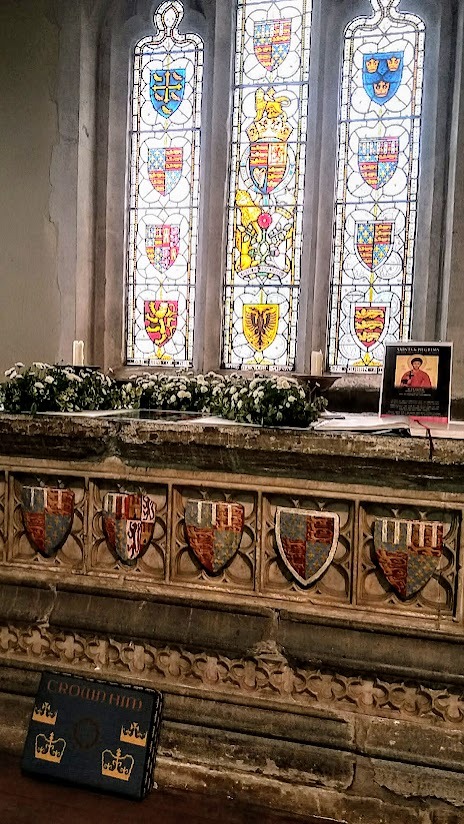
View On WordPress
#Anne Mortimer#camels#Cecily Neville#Christmas#Clarendon Palace#clocks#Dominican friaries#Edmund of Langley#Edward II#Edward III#Eleanor of Castile#fire#Henry III#Henry IV#Isabel of Castile#Joan of Navarre#John of Wheathampstead#King&039;s Langley#palaces#Piers Gaveston#Reformation#Richard Earl of Cambridge#Richard II#royal tombs
12 notes
·
View notes
Text

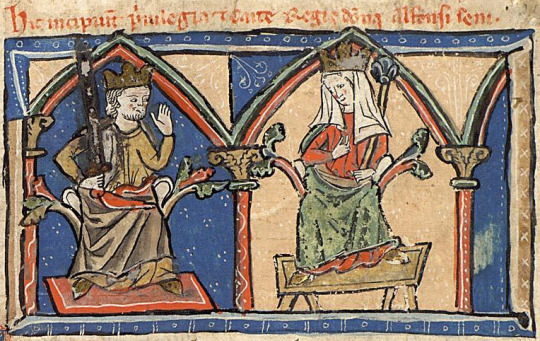




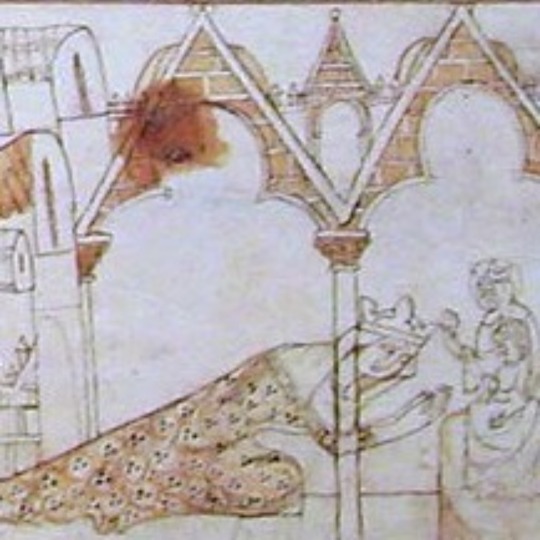

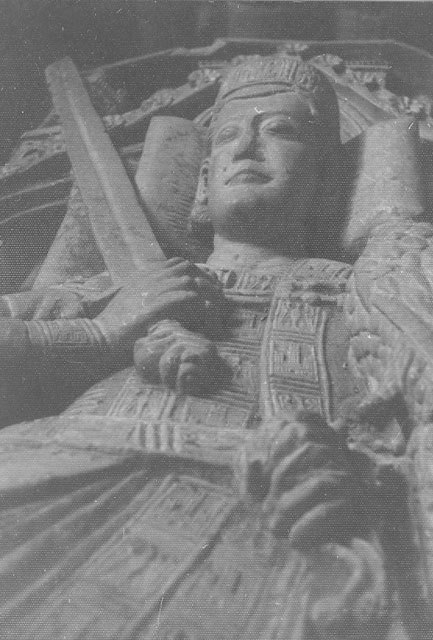

The Bastard Kings and their families
This is series of posts are complementary to this historical parallels post from the JON SNOW FORTNIGHT EVENT, and it's purpouse to discover the lives of medieval bastard kings, and the following posts are meant to collect portraits of those kings and their close relatives.
In many cases it's difficult to find contemporary art of their period, so some of the portrayals are subsequent.
1) Ferdinand III of Castile (1199/1201 – 1252), son of Alfonso IX of Leon and his wife Berenguela I of Castile
2) Alfonso IX of Leon (1171 – 1230), son of Ferdinand II of Leon and his wife Urraca of Portugal; with Berenguela I of Castile (1179/ 1180 – 1246), daughter of Alfonso VIII of Castile and his wife Eleanor of England
3) Blanche of Castile (1188 – 1252), daughter of Alfonso VIII of Castile and his wife Eleanor of England
4) Henry I of Castile (1204– 6 June 1217), son of Alfonso VIII of Castile and his wife Eleanor of England
5) Urraca of Castile (1186/ 1187 – 1220), daughter of Alfonso VIII of Castile and his wife Eleanor of England
6) Ferdinand of Leon (ca. 1192 – 1214), son of Alfonso IX of Leon and his wife Theresa of Portugal
7) Elisabeth of Swabia (1205 – 1235), daughter of Philip of Swabia and Irene Angelina
8) Alfonso X of Castile (1221 – 1284), son of Ferdinand III of Castile and his wife Elisabeth of Swabia
9) Philip of Castile (1231- 1274), son of Ferdinand III of Castile and his wife Elisabeth of Swabia
10) Eleanor of Castile (1241- 1290) daughter of Ferdinand III of Castile and his wife Joan of Ponthieu: with Edward I of England ( 1239 – 1307), son of Henry III of England and his wife Eleanor of Provence
Note: The marriage of Alfonso IX's parents got also annulled/declared void due to consanguinity, but I didn't include him on the list because this example is already present in Ferdinand III & IV
#jonsnowfortnightevent2023#canonjonsnow#asoiaf#a song of ice and fire#day 10#echoes of the past#historical parallels#medival bastard kings#bastard kings and their families#ferdinand iii of castile#alfonso ix of leon#berenguela i of castile#blanche of castile#henry i of castile#ferdinand of leon#urraca of castile#alfonso x of castile#philip of castile#eleanor of castile#edward i of england
4 notes
·
View notes
Text
Below the cut I have made a list of each English and British monarch, the age of their mothers at their births, and which number pregnancy they were the result of. Particularly before the early modern era, the perception of Queens and childbearing is quite skewed, which prompted me to make this list. I started with William I as the Anglo-Saxon kings didn’t have enough information for this list.
House of Normandy
William I (b. c.1028)
Son of Herleva (b. c.1003)
First pregnancy.
Approx age 25 at birth.
William II (b. c.1057/60)
Son of Matilda of Flanders (b. c.1031)
Third pregnancy at minimum, although exact birth order is unclear.
Approx age 26/29 at birth.
Henry I (b. c.1068)
Son of Matilda of Flanders (b. c.1031)
Fourth pregnancy at minimum, more likely eighth or ninth, although exact birth order is unclear.
Approx age 37 at birth.
Matilda (b. 7 Feb 1102)
Daughter of Matilda of Scotland (b. c.1080)
First pregnancy, possibly second.
Approx age 22 at birth.
Stephen (b. c.1092/6)
Son of Adela of Normandy (b. c.1067)
Fifth pregnancy, although exact birth order is uncertain.
Approx age 25/29 at birth.
Henry II (b. 5 Mar 1133)
Son of Empress Matilda (b. 7 Feb 1102)
First pregnancy.
Age 31 at birth.
Richard I (b. 8 Sep 1157)
Son of Eleanor of Aquitaine (b. c.1122)
Sixth pregnancy.
Approx age 35 at birth.
John (b. 24 Dec 1166)
Son of Eleanor of Aquitaine (b. c.1122)
Tenth pregnancy.
Approx age 44 at birth.
House of Plantagenet
Henry III (b. 1 Oct 1207)
Son of Isabella of Angoulême (b. c.1186/88)
First pregnancy.
Approx age 19/21 at birth.
Edward I (b. 17 Jun 1239)
Son of Eleanor of Provence (b. c.1223)
First pregnancy.
Age approx 16 at birth.
Edward II (b. 25 Apr 1284)
Son of Eleanor of Castile (b. c.1241)
Sixteenth pregnancy.
Approx age 43 at birth.
Edward III (b. 13 Nov 1312)
Son of Isabella of France (b. c.1295)
First pregnancy.
Approx age 17 at birth.
Richard II (b. 6 Jan 1367)
Son of Joan of Kent (b. 29 Sep 1326/7)
Seventh pregnancy.
Approx age 39/40 at birth.
House of Lancaster
Henry IV (b. c.Apr 1367)
Son of Blanche of Lancaster (b. 25 Mar 1342)
Sixth pregnancy.
Approx age 25 at birth.
Henry V (b. 16 Sep 1386)
Son of Mary de Bohun (b. c.1369/70)
First pregnancy.
Approx age 16/17 at birth.
Henry VI (b. 6 Dec 1421)
Son of Catherine of Valois (b. 27 Oct 1401)
First pregnancy.
Age 20 at birth.
House of York
Edward IV (b. 28 Apr 1442)
Son of Cecily Neville (b. 3 May 1415)
Third pregnancy.
Age 26 at birth.
Edward V (b. 2 Nov 1470)
Son of Elizabeth Woodville (b. c.1437)
Sixth pregnancy.
Approx age 33 at birth.
Richard III (b. 2 Oct 1452)
Son of Cecily Neville (b. 3 May 1415)
Eleventh pregnancy.
Age 37 at birth.
House of Tudor
Henry VII (b. 28 Jan 1457)
Son of Margaret Beaufort (b. 31 May 1443)
First pregnancy.
Age 13 at birth.
Henry VIII (b. 28 Jun 1491)
Son of Elizabeth of York (b. 11 Feb 1466)
Third pregnancy.
Age 25 at birth.
Edward VI (b. 12 Oct 1537)
Son of Jane Seymour (b. c.1509)
First pregnancy.
Approx age 28 at birth.
Jane (b. c.1537)
Daughter of Frances Brandon (b. 16 Jul 1517)
Third pregnancy.
Approx age 20 at birth.
Mary I (b. 18 Feb 1516)
Daughter of Catherine of Aragon (b. 16 Dec 1485)
Fifth pregnancy.
Age 30 at birth.
Elizabeth I (b. 7 Sep 1533)
Daughter of Anne Boleyn (b. c.1501/7)
First pregnancy.
Approx age 26/32 at birth.
House of Stuart
James I (b. 19 Jun 1566)
Son of Mary I of Scotland (b. 8 Dec 1542)
First pregnancy.
Age 23 at birth.
Charles I (b. 19 Nov 1600)
Son of Anne of Denmark (b. 12 Dec 1574)
Fifth pregnancy.
Age 25 at birth.
Charles II (b. 29 May 1630)
Son of Henrietta Maria of France (b. 25 Nov 1609)
Second pregnancy.
Age 20 at birth.
James II (14 Oct 1633)
Son of Henrietta Maria of France (b. 25 Nov 1609)
Fourth pregnancy.
Age 23 at birth.
William III (b. 4 Nov 1650)
Son of Mary, Princess Royal (b. 4 Nov 1631)
Second pregnancy.
Age 19 at birth.
Mary II (b. 30 Apr 1662)
Daughter of Anne Hyde (b. 12 Mar 1637)
Second pregnancy.
Age 25 at birth.
Anne (b. 6 Feb 1665)
Daughter of Anne Hyde (b. 12 Mar 1637)
Fourth pregnancy.
Age 27 at birth.
House of Hanover
George I (b. 28 May 1660)
Son of Sophia of the Palatinate (b. 14 Oct 1630)
First pregnancy.
Age 30 at birth.
George II (b. 9 Nov 1683)
Son of Sophia Dorothea of Celle (b. 15 Sep 1666)
First pregnancy.
Age 17 at birth.
George III (b. 4 Jun 1738)
Son of Augusta of Saxe-Gotha (b. 30 Nov 1719)
Second pregnancy.
Age 18 at birth.
George IV (b. 12 Aug 1762)
Son of Charlotte of Mecklenburg-Strelitz (b. 19 May 1744)
First pregnancy.
Age 18 at birth.
William IV (b. 21 Aug 1765)
Son of Charlotte of Mecklenburg-Strelitz (b. 19 May 1744)
Third pregnancy.
Age 21 at birth.
Victoria (b. 24 May 1819)
Daughter of Victoria of Saxe-Coburg-Saafield (b. 17 Aug 1786)
Third pregnancy.
Age 32 at birth.
Edward VII (b. 9 Nov 1841)
Daughter of Victoria of the United Kingdom (b. 24 May 1819)
Second pregnancy.
Age 22 at birth.
House of Windsor
George V (b. 3 Jun 1865)
Son of Alexandra of Denmark (b. 1 Dec 1844)
Second pregnancy.
Age 20 at birth.
Edward VIII (b. 23 Jun 1894)
Son of Mary of Teck (b. 26 May 1867)
First pregnancy.
Age 27 at birth.
George VI (b. 14 Dec 1895)
Son of Mary of Teck (b. 26 May 1867)
Second pregnancy.
Age 28 at birth.
Elizabeth II (b. 21 Apr 1926)
Daughter of Elizabeth Bowes-Lyon (b. 4 Aug 1900)
First pregnancy.
Age 25 at birth.
Charles III (b. 14 Nov 1948)
Son of Elizabeth II of the United Kingdom (b. 21 Apr 1926)
First pregnancy.
Age 22 at birth.
377 notes
·
View notes
Text
THE FORTUNE OF THREE
Angelina of Greece
Angelina was a slave in the harem of Sultan Bayezid I who would be recaptured by the Timurids to be later sent to the King of Castile as a “gift”.
It is speculated that she was born around 1380 as she was described as still being young in 1402, however, no exact date is proven to be correct.

Early Life
Nothing is known about the early life of this lady. However, she was likely of Greek origin, given that in Castille, she was referred to as “Angelina de Grecia,” and most historians agree that she was of Greek origin.
Some historians propose that she was the daughter of John V Paleologus and married Bayezid in 1372. However, since she is not mentioned in any Byzantine documents of that time and was sent to Spain where she remained permanently without any connection to the Royal Byzantine family, it is highly unlikely that she is the daughter of John.
Other accounts, and Angelina herself (through her tomb), claim that she is the daughter of a certain Count John/Ivan of Hungary, Duke of Slavonia/Dalmatia, the alleged illegitimate son of an unnamed King of Hungary. However, the lack of information about Count John/Ivan, if he ever existed, suggests that this might have been a plot created by the King of Castille to find noblemen for her to marry, a plot in which Angelina herself participated.
There was no Count/Duke of Slavonia by that name at the time that I could find information on. He was likely invented for higher chances of matchmaking purposes, as likely, Angelina was of humble origin before becoming a slave, and nobility typically preferred to marry within their own class.
First Capture
Some speculate that she was captured in the aftermath of the Battle of Nicopolis in 1396, in case it is true she would have been around 16 years old. This speculation is linked to the belief that she was Hungarian, though it is more probable that she was not.
Other sources believe she was captured around 1391 in Thessalonica. In that case, she would have been around 11 years old, slightly older than the preferred age for girls to be educated as potential concubines but not uncommon.
Life In The Harem
Despite being sold as a slave in the imperial palace of Sultan Bayezid I, Angelina seems to have been one of the few Christian slaves in the palace. Timur later sent her as a “gift” to Henry III of Castille, and as we know Muslim women are not permitted to engage with men of other faiths.
Another indication of her faith is found in a past edition of Clavijo’s work.
“Argote de Molina (the editor of Clavijo) in the Discurso, which he prefixed to the Edition Princeps of 1582, states that with the presents of jewels, Timur sent to King Henry two Christian maidens.” - Embassy to Tamerlane/ 1403-1406 (Broadway Travellers) Volume 24, pg 178. (Angelina was one of the mentioned maidens.)
Considering her religion, it is safe to assume she was never considered a potential concubine for Bayezid, as all concubines of the Sultan had to be Muslims. She was more likely working as a servant under a higher-ranking slave or one of Bayezid’s Christian wives (Macedonian Princess, Byzantine princess, or Olivera Lazarevic).
Despina Hatun (Olivera Lazarevic) was captured alongside her daughters and Christian servants.
“When he was in Kütahya, Timur sent for Olivera Despina, her daughters, and her household, alongside the daughter of the ruler of Karaman [Jalayirid Sultanate], whom Beyazid was planning to marry off to his son Mustafa. They were brought to his camp with many servants, musicians, and dancers. He suggested that the Princess and other members of her household, who were still Christian, should embrace Islam. Despite her daughters being Muslim, Olivera declined this offer.” - Buxton, Anna. The European Sultanas of the Ottoman Empire - color edition. Kindle Edition.
If she was one of Olivera’s Christian servants, that would explain why she remained a Christian despite serving in the Imperial palace. Christian wives of early Ottoman Sultans are speculated to have freed slaves or, at the very least prevented forced Islamization.
Second Capture
In the aftermath of the Battle of Ankara in 1402, Timur sent his soldiers to plunder Bursa, resulting in the capture of the imperial treasure and slaves. It is conceivable that Angelina was among those captured.
Alternatively, she may not have been taken from Bursa but in a residence in Yenisehir where Olivera Lazarevic, her daughters, and servants resided.
After her capture, she was sent to Emir Timur's camp, where she remained for a period before being presented as a "gift" to King Henry III of Castile. At that time, Timur had received an embassy from the King of Castile, led by Don Payo Gonzalez de Sotomayor and Don Hernan Sanchez de Palazuelos, and upon their departure, he decided to send them off with Christian maidens to be given to Henry III of Castile. Both of these noblemen eventually married the other maidens who accompanied Angelina.
Arrival In Castile
Upon her arrival in Castile in 1403, while passing through Seville, Angelina caught the attention of a Genoese poet named Francisco Imperial, who was residing in the same city at the time. He composed a poem dedicated to her, which has survived to this day. From his poem, it can be inferred that Angelina was a woman of great beauty who captivated those around her as she traveled through Castile.
Upon reaching the Alcazar of Segovia, where King Henry was residing, the king, moved by pity for her and her entourage, took them under his protection.
Marriage To Don Diego González de Contreras
Around 1403, she married Don Diego González de Contreras, a knight and nobleman in the court of Henry. It is believed that the marriage was arranged by Henry, who likely sponsored the maidens' stay at court and their dowries.
Angelina, renowned for her beauty, likely had several suitors vying for her hand, but Don Diego, Lord of the house of Contreras, was ultimately chosen as the most suitable candidate by the King.
Diego is thought to have been well in his 70s at the time of his death in 1437, making him around 36 to 45 years old at the time of his marriage to the 22/23 years old Angelina.
The noble couple later took up residence in the Contreras’ ancestral home in the parish of San Juan de los Caballeros, Segovia, where Diego held the position of perpetual Regidor of Segovia, a hereditary title that would later pass to his son.
The couple welcomed two sons together, Fernán Gronzález de Contreras, who would later succeed his father as Regidor of Segovia, Juan González de Contreras, and possibly a daughter, Doña Isabel González de Contreras.

Later Life
Angelina likely led a noble and tranquil life as the wife of a nobleman in her husband’s ancestral home, where she also cared for her children.
It is believed that she passed away sometime after her husband died in 1437. However, historians have not been able to conclusively prove this theory. What is known is that she was certainly laid to rest in Segovia, where her body was buried in the church of San Juan.
The inscription on her tomb read as follows:
"Here lies the honored Dona Angelina of Greece, daughter of Count Ivan and granddaughter of the King of Hungary, wife of Diego González de Contreras."
Unfortunately, the church was later ruined, and her remains were transported to the neighboring church of San Pablo.

Legacy
Her grandson Rodrigo de Contreras (through Fernan) mentioned her in his will, written sometime in the late 15th to 16th century.
The will read as follows:
"When our Lord Jesus Christ pleases to take me from this present life, may my body be buried in the church of San Juan beside the grave of my grandmother Doña Angelina de Grecia. May God help us."
Her descendant Juan de Contreras, Marquis of Lozoya, later wrote a biography of her life in the 20th century.
Issue
Don Fernan Gonzalez de Contreras
Juan González de Contreras
Dona Isabel de Contreras (possibly)
Summary
Despite the turbulent period Angelina lived through, from being a simple girl of Greek parentage captured and enslaved in the Ottoman imperial palace to being "gifted" to the King of Castile by her second captor, Angelina was fortunate enough to have found a life of nobility and a family to care for.
Poem By Francisco Imperial Dedicated to Angelina:
"With great tranquility and meekness,
beauty and sweet air,
honesty and without custom,
of elegance and mischief
from the lands of Cayre
I saw bring to the King of Spain
with a very strange height
delicate and graceful demeanor.
Whether she be Tartar or Greek,
as soon as I could see her
her disposition does not deny
to be of a grand name.
She must undoubtedly be
a woman of high birth
placed in great tribulation,
deprived of great power.
Her countenance seemed
to say 'Alas, captive am I,
it is fitting from now on
that I live in servitude
Oh, elusive fortune!
Alas, why was I born!
Tell me, what did I deserve
for you to make me live!
My Greece, my Cardíamo
Oh my sweet Angelina!
beloved land that I cherish so much
where such plunder is born
Who separated me so quickly
from you and your dominion
and brought me to the great river where the sun rises and sets?"
(Sources: "Embassy to Tamerlane/ 1403-1406 (Broadway Travellers) Volume 24", Buxton, Anna. "The European Sultanas of the Ottoman Empire", "Dona Angelina de Grecia: ensayo biografico".)
#fortuneofthree#writer#medieval#angelinaofgreece#angelinadegrecia#ottoman empire#angelina of greece#geology#15th century#14th century#medieval history#ottoman history#history#battle of ankara#middle ages#Francisco Imperial#art#illustration#historical women
50 notes
·
View notes
Text

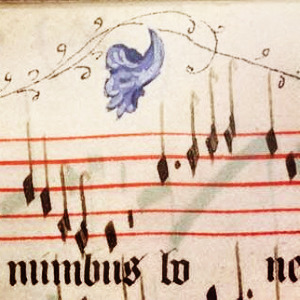


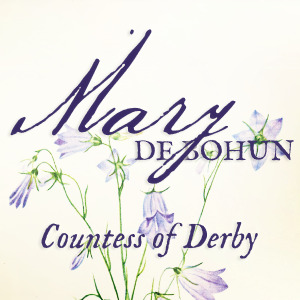




Mary de Bohun, Countess of Derby
Mary de Bohun was probably born around 22 December 1370 to Humphrey de Bohun and Joan Fitzalan, Earl and Countess of Hereford. As her father had no son, she and her elder sister, Eleanor, became the heiresses of his wealthy earldom. Eleanor married Thomas of Woodstock, the youngest son of Edward III, and according to Froissart, Woodstock intended Mary to enter a nunnery so he would inherit the entire earldom. This was not to be. In late 1380 or early 1381, Mary married John of Gaunt's son and heir, Henry Bolingbroke, the future Henry IV. The marriage appears to have happy as they shared similar interests and often spent time together. The story that Mary gave birth to a short-lived son in 1382, when she would have been only 11, is now believed to be a myth brought into being by a mistranslated text referring to her sister giving birth to a son. Mary's first child was the future Henry V, born 16 September 1386. Four more children soon followed: Thomas, Duke of Clarence (29 September 1387), John, Duke of Bedford (20 June 1389), Humphrey, Duke of Gloucester (3 October 1390) and Blanche, Electress Palatine (25 February 1392). Mary died either giving birth to her sixth and final child, Philippa, Queen of Norway, Denmark and Sweden, or from complications afterwards, on 1 July 1394, when she was only 23 years old. Mary was buried on 6 July 1394 in the Church of the Annunciation of Our Lady of the Newarke in Leicester. The church and her tomb was destroyed in the Reformation.
A little of her personality can be reconstructed. She was interested in music, playing the harp or cithara, and she bought a ruler to line parchment for musical notation, suggesting she may have also composed music.Such an interest was shared by both her husband and eldest son, one or both of whom were the 'Roy Henry' who composed two mass movements. She maintained a close contacts with other noblewomen, not only her mother and sister, but Constanza of Castile, Katherine Swynford and Margaret Bagot, suggesting that she may well have been more politically aware and involved than what is generally believed. She may have also continued the de Bohun of patronising manuscript illuminators. A number of illuminated manuscripts believed to belong to her or her sister are some of the most celebrated late medieval English manuscripts.
Mary never became Duchess of Lancaster, let alone Queen of England, but it was her family's badge of the swan that became associated with the Lancastrian kings, most famously borne by her eldest son, Henry V. One of Henry V's first acts as king was to order a copper effigy for her tomb, while in the charter of his Syon foundation, he required that the soul of "Mary … our most dear mother", among others, be prayed for in a daily divine service. Her third son, John, recorded her anniversary into his personal breviary, while her daughters may have each carried manuscripts belonging to her with them when they left England to be married. Despite the brevity of her life, Mary was remembered long after her death.
Sources: Paris, Bibliothèque Nationale, MS Lat. 17294, Chris Given-Wilson, Henry IV (Yale University Press 2017), Ian Mortimer, The Fears of Henry IV (Vintage 2008), John Matusiak, Henry V (Routledge 2012), Calendar of the Patent Rolls: Henry IV. Vol. I. A. D. 1399-1401, Calendar of Close Rolls 1381-1385, Rebecca Holdorph, 'My Well-Beloved Companion': Men, Women, Marriage and Power in the Earldom and Duchy of Lancaster, 1265-1399, University of Southampton, PhD Thesis, Marina Vidas, The Cophenhagen Bohun Hours: Women, Representation and Reception in Fourteenth Century England (Museum Tusculanum Press 2019)
88 notes
·
View notes
Note
can you name all 59 women
1. Anne Bonny: a lesbian
2. Mary Read: a lesbian
3. Mary Read again: an abusive, cheating wife
4. Mary, Queen of Scots: a lesbian. (But also not a lesbian because Hester Mary MacKenzie was also her concubine.)
5. Isabella 'Bella' Baldwin: a lesbian
6. Queen Elizabeth of Parma, also known as Isabelle d'Este, was the Empress of Modena. She's one of several queens whose non-biological children were legitimized by the church.
7. Mary, Queen of France (before and during her marriage to Henry III).
8. Charlotte of Savoy: a lesbian
9. Elizabeth of York, also Elizabeth Stuart: a lesbian
10. Anna Ivanovna Demushkin: a lesbian (Ivan the Terrible's wife, as well as Mary Queen of Scots')
11. Mary, Duchess of Orleans: a lesbian
12. Mary, Duchess of Orleans again: a lesbian
13. Isabella of France: a lesbian
14. Margaret of Anjou, wife of Francis Plantagenet: a lesbian.
15. Mary 'Mary of Guise', daughter of Margaret of Anjou and Francis Plantagenet: a lesbian
16. Queen of Denmark: a lesbian (Anne's daughter, Sophie of Poland and Denmark)
17. Catherine Howard: a lesbian
18. Katherine Howard: a lesbian
19. Mary, Queen of England: a lesbian (Mary Tudor)
20. Eleanor of Austria, daughter of Ferdinand and Isabella: a lesbian (Mary Tudor's daughter, also Queen of England)
21. Mary, Queen of Bohemia: a lesbian
22. Catherine Parr: a lesbian
23. Eleanor of Austria, again: a lesbian (Mary Tudor's daughter, also queen of England)
24. Mary Tudor: a lesbian
25. Queen of Scots: a lesbian
26. Catherine Parr again: a lesbian
27. Christine de Bourgogne: a lesbian, as well as a queen of France.
28. Jane Seymour, wife of Thomas Seymour and mother of Edward Seymour. Also a lesbian.
29. Mary Stuart: a lesbian
30. Isabella of Castile: a lesbian
31. Mary Stuart again, daughter of Mary I of England: a lesbian
32. Jane Seymour again: lesbian (Edward Seymour's mom)
33. Anne Fitzwilliam, Duchess of Norfolk: a lesbian
34. Barbara Tacy, Countess of Pembroke: a lesbian
35. Mary Tudor again: a lesbian. (Mary Stuart's daughter again)
36. Jane Buckley: a lesbian
37. Catherine Parr: Elizabeth Howard, Parr's daughter, was Queen of England after her mother's death and died without an heir.
38. Margaret Cecil: a lesbian
39. Anna of Cleves: Anne Beaton, wife of Frederick V, Elector of Saxony and of James I and Mary, Queen of Scots; and her granddaughter, Lady Jane Grey, daughter of King Henry VIII and Edward Seymour.
40. Henrietta Maria Stuart: lesbian
41. Anne of Cleves: lesbian
42. Mary Queen of France: lesbian
43. Mary Queen of France again: a lesbian
44. Margaret, Countess of Lennox: lesbian
45. Elizabeth Howard: another lesbian
46.
Anne Stafford: a lesbian
47.
Jane Stafford: a lesbian
48. Jane Seymour again: a lesbian
49. Mary Stuart, Queen of Scots: lesbian
50. Princess Margaret: a lesbian
51. Anne of Cleves again, this time as a mother: Mary Tudor's daughter; Queen of England for less than a month in 1553
52.
Jane Stafford again: lesbian
53. Margaret Howard, Countess of Stafford: lesbian
54. Lady Jane Grey again: a lesbian
55. Princess Anne: a lesbian. (Princess of Portugal and the two Marianas, of Portugal and England.)
56. Elizabeth Howard again: lesbian
57. Margaret of Anjou, Lady of Woodville, wife of Ralph Neville, son of the Duke of Northumberland (Henry Tudor).
58.
161 notes
·
View notes
Photo



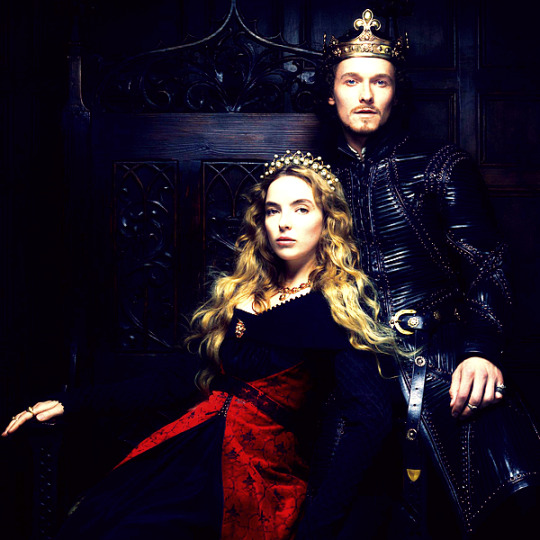

♛ STARZ THE ROYALTY COLLECTION* ♛
THE WHITE QUEEN | men go to battle women wage war
↳ Edward IV, King of England and Elizabeth Woodville, Queen of England
↳ George Plantagenet, Duke of Clarence and Prince of England and Isabelle Neville, Duchess of Clarence.
↳ Richard Plantagenet, Duke of Gloucester and Prince of England later Richard III of England and Anne Neville, Duchess of Gloucester later Queen of England.
THE WHITE PRINCESS | love to the death
↳ Henry VII, King of England and Elizabeth of York, Queen of England.
THE SPANISH PRINCESS | fight like a woman
↳ Henry VIII, King of England and Katherine of Aragon and Castile, Queen of England.
*based on the Philippa Gregory Novels: The White Queen, The Red Queen, The Kingmaker’s Daughter, The White Princess, The Constant Princess, The King’s Curse and Three Sisters, Three Queens
#the white queen#the white princess#the spanish princess#perioddramaedit#twqedit#twpedit#thespanishprincessedit#max irons#rebecca ferguson#david oakes#Eleanor Tomlinson#Aneurin Barnard#faye marsay#jacob collins levy#jacob collins-levy#jodie comer#ruairi o'connor#charlotte hope#my edits#edward iv#elizabeth woodville#George Plantagenet#isabelle neville#Richard III#anne neville#henry vii#elizabeth of york#henry viii#Katherine of Aragon#forever bitter we did not get promos of mary/charles or margaret/james
329 notes
·
View notes
Note
Hi I'm writing a fantasy novel and I'm just stuck on one thing. One of my main characters is a queen ( or princess still working it out) however I want my queen to go on a quest with her companions.Yet I don't want her to leave her kingdom because it was attack or taken over by the bad guy....Got any ideas that could help???
Queen Needs Non-Attack Reason to Leave Kingdom
If I'm understanding your question correctly, you want her to be able to leave her kingdom to go on a quest with her companions, you just don't want the reason for the quest (or the reason she has to leave) to be due to an attack or usurper.
It's actually not historically rare for monarchs to leave their thrones and even their kingdoms behind for one reason or another. Henry VIII traveled to France to meet with French king Francis I (the summit was known as the Field of Cloth and Gold.) Richard I left England to fight in the Crusades. Edward III left England to fight a war in France. Queen Isabella and King Ferdinand left Castile to conquer Granada.
So, war is definitely a reason the queen in your story might leave her kingdom. However, if you're looking for more of a quest-friendly reason, I think the summit idea is a good one. Perhaps to meet with the monarch of another kingdom, perhaps even secretly for some reason. It could also be a rescue that the queen feels she must be a part of--or maybe needs to be for the plan to work--or a quest for an object or bit of information that the queen doesn't trust anyone else to get.
Depending on the situation, you may want to have the queen set up a regent--someone to rule in her absence. This can be a trustworthy person or even her council.
I hope that helps!
•••••••••••••••••••••••••••••••••
I’ve been writing seriously for over 30 years and love to share what I’ve learned. Have a writing question? My inbox is always open!
Learn more about WQA
See my ask policies
Visit my Master List of Top Posts
Go to ko-fi.com/wqa to buy me coffee or see my commissions
29 notes
·
View notes
Photo

Et quia solum Guilielmum Capuanorum Principem habebat superstitem, veritus ne eumdem conditione humanae fragilitatis amitteret, Sibiliam sororem Ducis Burgundiae duxit uxorem, quae non multo post Salerni mortua est, et apud Caveam est sepulta. Tertio Beatricem filiam Comitis de Reteste in uxoris accepit, de qua filiam habuit, quem Constantiam appellavit.
Chronicon Romualdi II, archiepiscopi Salernitani, p. 16
Beatrice was born around 1135 in the county of Rethel (northern France) from Gunther (also know as Ithier) de Vitry, earl of Rethel, and Beatrice of Namur.
On her mother’s side, Beatrice descended from Charlemagne (through his son, Louis the Pious), while on the paternal side she was a grandniece of Baldwin II King of Jerusalem (her paternal grandmother Matilda, titular Countess of Rethel, was the King’s younger sister). The Counts of Rethel were also vassals of the powerful House of Champagne, known for its successful marriage politics (Count Theobald IV of Blois-Champagne’s daughter, Isabelle, would marry in 1143 Duke Roger III of Apulia, eldest son of King Roger II of Sicily).
In 1151, Beatrice married this same Roger. The King of Sicily was at his third marriage at this point. His first wife had been Elvira, daughter of King Alfonso VI the Brave of León and Castile and of Galicia, who bore him six children (five sons and one daughter). However, when four of his sons (Roger, Tancred, Alphonse and the youngest, Henry) died before him, leaving only William as his heir, Roger II must have feared for his succession. In 1149, the King then married Sibylla, daughter of Duke Hugh II of Burgundy. She bore him a son, Henry (named after his late older brother), and two years later died of childbirth complications giving birth to a stillborn son. As this second Henry died young too, Roger thought about marrying for a third (and hopefully last) time.
It is possible that Roger’s choice of his third wife had been influenced by the future bride’s family ties with the Crusader royalties as Beatrice was related with both Queen Melisende of Jerusalem and the Queen’s niece Constance of Hauteville, ruling Princess of Antioch. Constance was also a first cousin once removed of Roger, who had (unsuccessfully) tried to snatch the Antiochian principality from her when her father Bohemond II was killed in battle 1130, leaving his two years old daughter as heir.
Beatrice bore Roger only a daughter, Constance, who was born in Palermo on November 2nd 1154. This baby girl (who would one day become Queen of Sicily) never knew her father as he died on February 26th.
Nothing certain is known about her widowed life, although we can suppose she took care of her only daughter. Beatrice died in Palermo on March 30th 1185, living enough to see Constance being betrothed to Emperor Frederick Barbarossa’s son, Henry.
The body of the Dowager Queen was laid to rest in the Chapel of St. Mary Magdalene, together with her predecessor, Elvira, and her step-children, Henry, Tancred, Alphonse and Roger. Through her daughter, Beatrice would become Emperor Frederick II’s grandmother.
Sources
Cronica di Romualdo Guarna, arcivescovo Salernitano Chronicon Romualdi II, archiepiscopi Salernitani Versione di G. del Re, con note e dilucidazione dello stesso
Garofalo Luigi, Tabularium regiae ac imperialis capellae collegiatae divi Petri in regio panormitano palatio Ferdinandi 2. regni Utriusque Siciliae regis
Hayes Dawn Marie, Roger II of Sicily. Family, Faith, and Empire in the Medieval Mediterranean World
Houben Hubert, Roger II Of Sicily: A Ruler Between East And West
SICILY/NAPLES: COUNTS & KINGS
Walter Ingeborg, BEATRICE di Rethel, regina di Sicilia, in Dizionario Biografico degli Italiani, vol. 7
#historicwomendaily#women#history#women in history#historical women#House of Hauteville#Roger II of Sicily#Beatrice of Rethel#norman swabian sicily#costanza i#people of sicily#women of sicily#myedit#historyedit
32 notes
·
View notes
Text

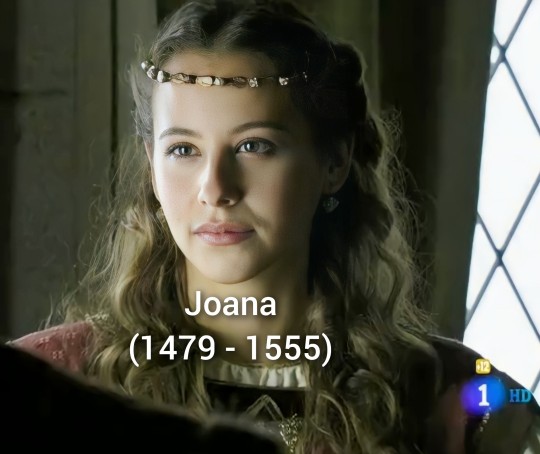


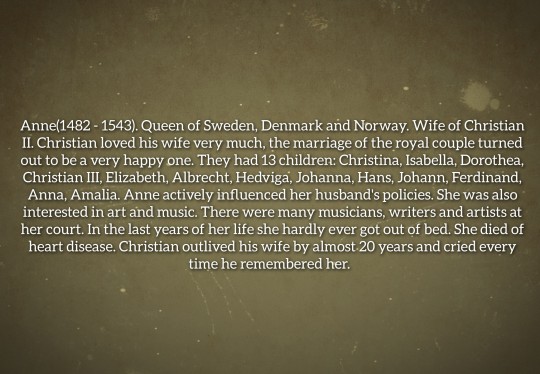
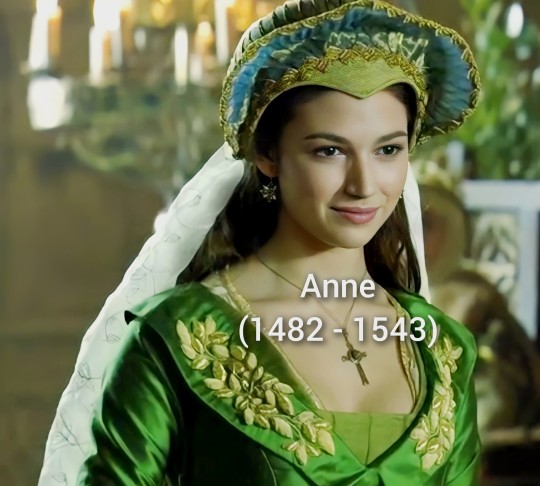




AU House of Trastamara: Children Isabella of Castile and Ferdinand of Aragon.
Joana(1479 - 1555). Duchess of Burgundy. Wife of Philip I of Austria. Mother of 6 children: Eleanor, Charles V, Isabella, Ferdinand, Maria, Catherine. Joana lived a long and interesting life. After the untimely death of her husband, she became regent under her infant son Charles. And after her son became emperor, he made her ruler of the Netherlands. Joana outlived not only her husband, but all of her siblings and even got to see her great-grandchildren. She died surrounded by her children and grandchildren.
Mary(1482 - 1550). Queen of Scots. Wife of James IV. Mary and James IV maintained a warm relationship throughout their marriage. The queen supported her husband in everything, but the king preferred her to his favorite. The marriage produced 7 children: James V, Margaret, Isabella, Matilda, Robert, Anabella and David. After her husband's death, she devoted herself to culture and art.
Anne(1482 - 1543). Queen of Sweden, Denmark and Norway. Wife of Christian II. Christian loved his wife very much, the marriage of the royal couple turned out to be a very happy one. They had 13 children: Christina, Isabella, Dorothea, Christian III, Elizabeth, Albrecht, Hedviga, Johanna, Hans, Johann, Ferdinand, Anne, Amalia. Anne actively influenced her husband's policies. She was also interested in art and music. There were many musicians, writers and artists at her court. In the last years of her life she hardly ever got out of bed. She died of heart disease. Christian outlived his wife by almost 20 years and cried every time he remembered her.
Catherine(1485 - 1543). Queen of England. Wife of Prince Arthur and then his brother Henry VIII. Mother of 6 children: Elizabeth, Henry IX, William, Edmund, Mary, Isabella. The marriage of Henry and Catherine was a happy one. She exerted political influence on her husband. In addition, Catherine paid great attention to the upbringing and education of her children, and she maintained close communication with all her brothers and sisters.
Pedro(1488 - 1517). Grand Master of the Order of Calatrava. Count de Ampurias. Married Henry VIII's sister, Margaret Tudor. Father of 3 children: Jaime, Yolanda, Fadrique. Together with his older brothers took part in military campaigns. He died on the battlefield. After the death of his brother, Alfonso took his wife and his nephews to the palace.
AU: Дети Изабеллы Кастильской и Фердинанда Арагонского.
Хуана(1479 - 1555). Герцогиня Бургундская. Жена Филиппа I Австрийского. Мать 6 детей: Элеонора, Карл V, Изабелла, Фердинанд, Мария, Екатерина. Хуана прожила долгую и интересную жизнь. После скоропостижной смерти своего супруга стала регентом при малолетнем сыне Карле. А после того как её сын стал императором он сделал её правительницей Нидерландов. Хуана пережила не только мужа, но и всех своих братьев и сестёр и даже смогла увидеть своих правнуков. Умерла в окружении детей и внуков.
Мария(1482 - 1550). Королева Шотландии. Жена Якова IV. Между Марией и Яковом IV на протяжении всего брака сохранялись тёплые отношения. Королева во всем поддерживала своего мужа, но король предпочитал ей свою фаворитку. В браке родилось 7 детей: Яков V, Маргарита, Изабелла, Матильда, Роберт, Анабелла, Давид. После смерти мужа она посвятила всю себя культуре и искусству.
Ана(1482 - 1543). Королева Швеции, Дании и Норвегии. Жена Кристиана II. Кристиан очень любил свою жену, брак королевской пары оказался очень счастливым. У них родилось 13 детей: Кристина, Изабелла, Доротея, Кристиан III, Елизавета, Альбрехт, Хедвига, Иоанна, Ганс, Иоганн, Фердинанд, Анна, Амалия. Ана активно влияла на политику своего мужа. А также она интересовалась искусством и музыкой. При её дворе было много музыкантов, писателей и художников. В последние годы жизни она почти не вставала с постели. Умерла от сердечной болезни. Кристиан пережил свою жену почти на 20 лет и каждый раз плакал когда о ней вспоминал.
Екатерина(1485 - 1543). Королева Англии. Жена принца Артура, а затем его брата Генриха VIII. Мать 6 детей: Елизавета, Генрих IX, Уильям, Эдмунд, Мария, Изабелла. Брак Генриха и Екатерины был счастливым. Оказывала политическое влияние на своего мужа. Кроме этого Екатерина уделяла большое внимание воспитанию и образованию своих детей, а также она поддерживала тесное общение со всеми своими братьями и сёстрами.
Педро(1488 - 1517). Великий Магистр ордена Калатравы. Граф де Ампурьяс. Женился на сестре Генриха VIII, Маргарите Тюдор. Отец 3 детей: Хайме, Иоланда, Фадрике. Вместе со старшими братьями принимал участие в военных походах. Погиб на поле боя. После смерти брата Альфонсо забрал его жену и своих племянником во дворец.
Part 2.
#history#history au#spanish#spanish history#royal family#royalty#the tudors#isabella#Isabella of Castile#isabella of portugal#Ferdinand of Aragon#catherine of aragon#Henryviii#15th century#16th century#mary tudor#au#spanish princess#spain#spanish royal family#the spanish princess#spanish royalty#Roy#Royal#Royals
7 notes
·
View notes
Text
ruby
The glowing ruby shall adorn,
Those who in July are born;
Then they’ll be exempt and free
From love’s doubts and anxiety.
— Gregorian birthstone poem
In the middle and right at the forefront of the Crown of England is a giant polished red stone. It is called the Black Prince's Ruby - and some people say its cursed.
The stone's story starts in Iberian Peninsula, where legends says that it was owned by Abū Sa'īd, the last Sultan of Granada. Abū Sa'īd was at war with Don Pedro of Castile and finally agreed to surrender. When the two sides met to finalize the agreement however, Pedro lived up to his moniker of 'the Cruel' and murdered the off-guard sultan and his entire entourage. The blood red stone over two inches long was found on the dead ruler's body and Pedro took it as a a trophy. Bad luck came along for the ride. Shortly after the deed, in 1366 Pedro's rule was challenged by one of his brothers and he enlisted the help of the English Edward of Woodstock, a man otherwise known as the Black Prince. After the revolt was put down, Edward demanded Pedro's two daughters - and the stone, in exchange for his help. Within three years, Pedro was dead. Edward, heir to the English throne, didn't live long enough to even rule. After that, the blood stone disappeared until 1415 when Henry V wore it on his helmet in his war with France. He almost lost it, and his head along with it, to an axe blow during the battle of Agincourt. Richard III wasn't so lucky when he wore the same stone during the Battle of Bosworth, where he was killed. Despite that, the stone stayed in royal hands until Oliver Cromwell's rebellion where it disappeared for a time from the records. It showed back up again with Charles II in 1660 though and in 1838 it became the crowning jewel in Queen Victoria's coronation crown.
By then however, it wasn't considered a ruby anymore. In 1783, chemistry had advanced enough to differentiate between rubies and their look-alike, magnesium bearing spinels.
Since July's birthstone is the ruby, let's take a closer look at it before the month is over.
Rubies are considered the second most valuable jewel in the world, one of the Big Four, with the others being diamonds, sapphires and emeralds. They are second in hardness only to diamonds. Ancient sanskrit gave them the name ratnaraj, which means 'the king of jewels'. They have been mined in Myanmar since 2500 BC (or only 600 AD according to another site, though there are records of rubies traveling the North Silk Road from China as far back as 200 BC and they are mentioned in the Old Testament and the Torah so this is one of those wobbly 'facts'). Still, rubies that come from that part of the world are still considered the high standard today. In color, they can range from a red-purple to 'pigeon blood' red to orange or pink. Rubies are used in lasers, with the first one being built in 1960. Rubies from Greenland are said to be the oldest in the world, clocking in at 3 billion years old.
Impressive, isn't it? And anything with this much history, has to have stories that go with it. Let's talk superstition.
With such a rich, red color, of course rubies would be associated with blood. In Burma, India and China, rubies were placed in helmets, breastplates and weapon scabbards, with the belief that they would both protect their wearer and encourage bravery, strength and stamina. In Persia, the ruby granted mental clarity as well as divine power. The Chinese gave rubies to each other as good luck and protective charms. It was said that when evil approached a dark blot would appear on the surface of the red gem and when the darkness cleared away the evil had passed by. In India, wearing a ruby on the heart side of your body will allow you to live in peace. In many cultures, the rich, red color of rubies makes them symbolic of love and passion. Even today, tradition holds that rubies are the ideal gift to give for 15th and 40th wedding anniversaries. Folklore says that rubies help with bleeding, inflammation and body heat.
And, of course, Dorthy's shoes in the 1939 technicolor movie The Wizard of Oz were ruby slippers, which showed up against the yellow brick road much better than the simple silver shoes of the book by the same name would have.
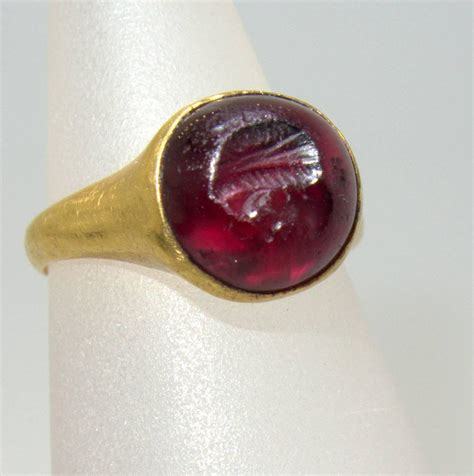
#superstition#folklore#ruby#birthstone#july#history#gemstone#jewelry#good luck#lucky#romance#crown jewels#united kingdom#black prince#edward black prince
13 notes
·
View notes
Note
We all know your stance about GRRM saying that he based Aegon the Unworthy on Henry VIII, so I was wondering, how (undirectly) unfair would you say that GRRM is being to Charles VI of France when he has Aerys II be remembered as "the Mad" ?
I don't see the similarity between these cases.
For one, I have not seen any interviews or other statements by GRRM in which he directly compares Aerys II and King Charles VI of France, much less any evidence that the author wants readers to think of Charles VI when he has written about Aerys II. I'm not saying, to be clear, that I think it is impossible for GRRM to have been inspired, partly or wholly, by Charles VI when creating the character of King Aerys; indeed, given GRRM's well-known (though not always specifically or particularly scholarly) interest in medieval European history, I would not at all be surprised if Charles VI was in GRRM's head as he has fleshed out the character of Aerys. Rather, I don't see the purposeful paralleling (or intent to parallel) on the part of the author between Aerys and Charles that I do on his part between Aegon IV and Henry VIII.
Too, and related to that point, I do not believe GRRM necessarily sees Charles VI as having a monopoly on the epithet (or popular designation as) "the Mad". After all, there are plenty of monarchs throughout history remembered (whatever the accuracy or inaccuracy of such memory) as mentally ill and/or unstable, from (to name just a very few) Caligula to Joanna of Castile to George III. Again, none of this is to say that GRRM was definitely not thinking about Charles VI in this context, but rather that Charles VI may simply be or have been one of many such examples in the author's mind as he was creating Aerys II.
I think the author wanted to depict Aerys II as an increasingly paranoid, delusional, and overall mentally ill king. I think it's entirely possible if not probable that GRRM remembered the infamous psychotic episodes of Charles VI when he has written about Aerys II. But I don't see that the author is deliberately urging readers to directly compare Charles VI and Aerys II in the same way he appears to be doing with Henry VIII and Aegon IV.
24 notes
·
View notes
Text
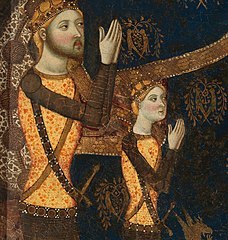

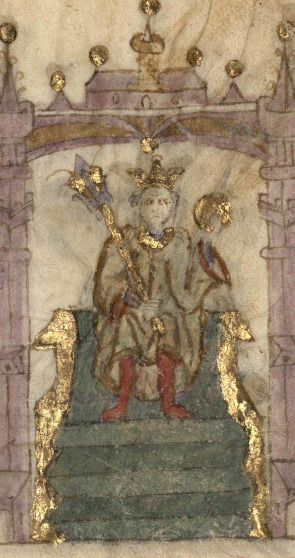
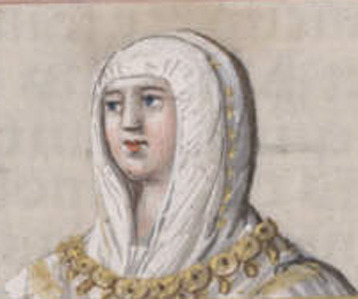
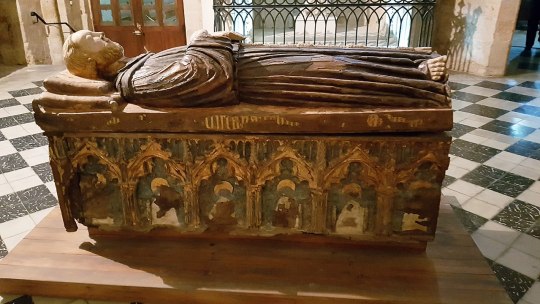
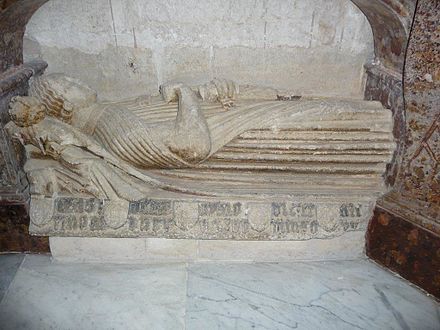

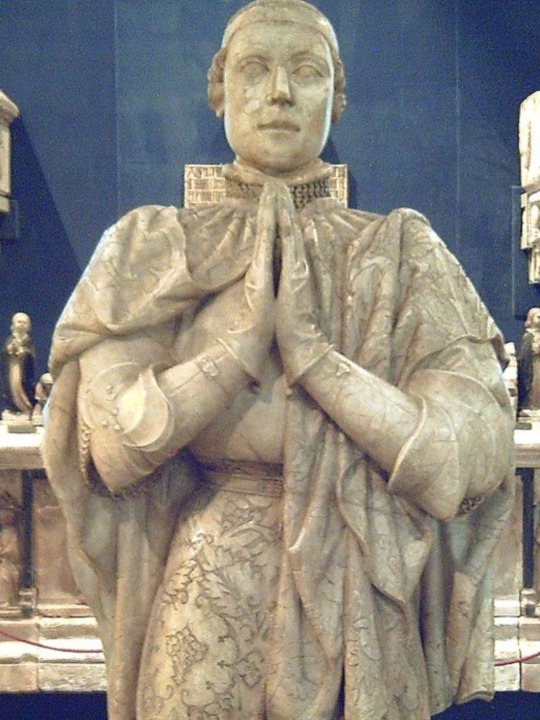
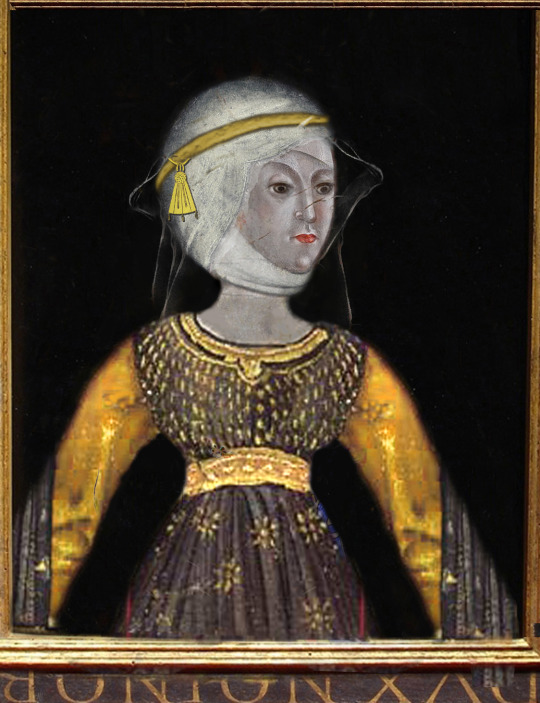

The Bastard Kings and their families
This is series of posts are complementary to this historical parallels post from the JON SNOW FORTNIGHT EVENT, and it's purpouse to discover the lives of medieval bastard kings, and the following posts are meant to collect portraits of those kings and their close relatives.
In many cases it's difficult to find contemporary art of their period, so some of the portrayals are subsequent.
1) Henry II of Castile ( 1334 – 1379), son of Alfonso XI of Castile and Leonor de Guzmán; and his son with Juana Manuel de Villena, John I of Castile (1358 – 1390)
2) His wife, Juana Manuel de Villena (1339 – 1381), daughter of Juan Manuel de Villena and his wife Blanca de la Cerda y Lara; with their daughter, Eleanor of Castile (1363 – 1415/1416)
3) His father, Alfonso XI of Castile (1311 – 1350), son of Ferdinand IV of Castile and his wife Constance of Portugal
4) His mother, Leonor de Guzmán y Ponce de León (1310–1351), daughter of Pedro Núñez de Guzmán and his wife Beatriz Ponce de León
5) His brother, Tello Alfonso of Castile (1337–1370), son of Alfonso XI of Castile and Leonor de Guzmán
6) His brother, Sancho Alfonso of Castile (1343–1375), son of Alfonso XI of Castile and Leonor de Guzmán
7) Daughters in law:
I. Eleonor of Aragon (20 February 1358 – 13 August 1382), daughter of Peter IV of Aragon and his wife Eleanor of Sicily; John I of Castile's first wife
II. Beatrice of Portugal (1373 – c. 1420) daughter of Ferdinand I of Portugal and his wife Leonor Teles de Meneses; John I of Castile's second wife
Son in law:
III. Charles III of Navarre (1361 –1425), son of Charles II of Navarre and Joan of Valois; Eleanor of Castile's huband
8) His brother, Peter I of Castile (1334 – 1369), son of Alfonso XI of Castile and Mary of Portugal
9) His niece, Isabella of Castile (1355 – 1392), daughter of Peter I of Castile and María de Padilla
10) His niece, Constance of Castile (1354 – 1394), daughter of Peter I of Castile and María de Padilla
#jonsnowfortnightevent2023#henry ii of castile#john i of castile#juana manuel de villena#eleanor of castile#alfonso xi of castile#leonor de guzmán#tello alfonso of castile#sancho alfonso of castile#peter i of castile#constance of castile#isabella of castile#asoiaf#a song of ice and fire#day 10#echoes of the past#historical parallels#medieval bastard kings#bastard kings and their families#eleanor of aragon#beatrice of portugal#charles iii of navarre#canonjonsnow
15 notes
·
View notes
Note
Did Isabella of Angouleme actually try to poison the French King lol?
so i do actually have an angevin sideblog: @baublecoded !
it really would not shock me, and the two cooks confessed to being paid by isabella. i would not be surprised if she had acted against the king of france — in that matter she had form — but i am hesitant to believe the accusations of poisoning considering the way isabella has otherwise been characterised as a “jezebel”, accused of “sorcery and witchcraft”, by chroniclers motivated by politics and misogyny.
i think she was an active, ambitious and independent/self-interested person who demonstrably was willing and able to mobilise and act in her best interests. i also think she was not particularly popular— blamed for john’s disastrous reign by chroniclers, but i think her lack of popularity had to have been motivated by her own character and actions to some extent. and there’s not much in the way of evidence to completely dismiss her reputation as detached from her family, prone to scheming for her own interests. it’s not a coincidence that isabella had been crucified by contemporaries for betraying her son by abandoning their cause to establish an english confederacy with disputed french territories years prior. isabella had intolerably transgressed the societal mores for a woman and mother.
furthermore, it was the word of two cooks undergoing torture against blanche of castile, the king of france’s mother, who had clashed with isabella over disputes over lands both women maintained belonged to their children. and when she died, after fleeing to fontevrault abbey allegedly to evade capture, she was buried outside the abbey, which “shocked” her son henry iii. so her guilt is easy to assume.
2 notes
·
View notes
Text
THE FORTUNE OF THREE
The life of Maria Gomez de Sotomayor: The Ottoman slave who had suffered great dispair in both Ottoman lands and outdoor lands.

Early Life
The date of birth nor origin of Maria is certain. Unlike Catalina, who has a fitted name for a Hungarian-origin woman, same for Angelina with her Greek/Byzantine influenced name, Maria’s name is too relatively common in both Hungarian and Greek areas to be certain of her origin, though it is possibly more likely that she is of Hungarian origin.
Maria is often regarded by some historians as the sister of Angelina of Greece, both regarded as Hungarian ladies who were captured by Ottoman raiders. While some historians suggest they could be siblings, others argue that they may have been referred to as "lady sisters" in a more metaphorical sense rather than literally.
Their differing names, Maria being called “Maria de Ungría”(Maria of Hungary) and Angelina referred to as “Angelina de Grecia” (Angelina of Greece) add to the confusion surrounding their identities. Additionally, some theories propose that they might have different mothers, as in Castile, children were often identified by their mother's nationality/ethnicity.
However, the odds that two sisters from different mothers could be captured in the same area at the same time and later reunited in an Ottoman harem is highly unlikely.
First Capture
Maria is believed to have been captured shortly after the Battle of Nicopolis in 1396. It is worth mentioning that she might have been captured at a different time and location, possibly during another raid by the Turks near their home borders.
She was likely a child when she was captured, as she would later be sent to King Henry III of Castile as a “gift” in 1402/1403, which suggests she could not have been too old (possibly in her mid-teens to early 20s by 1402).
Life in the Harem
Though captured and sent to the harem, Maria did not convert to Islam and remained a Christian throughout her enslavement.
Considering that all potential concubines of the Sultan had to be converted Muslims, it is safe to assume that Maria did not have to worry about concubinage duties.
Second Capture
Maria was either captured following the plunder of Bursa, five days after the Battle of Ankara, which took place on July 20, 1402, or sometime later in an unknown residence in Yenisehir, along with Olivera Lazarevic, her daughters, and other servants.
Payo Gomez de Sotomayor
Payo was one of the two ambassadors (the other being Hernan Sanchez de Palazuelos) sent from King Henry III of Castile to his correspondent, Timur, in 1402.
After their mission ended, Timur tasked the embassy with escorting Christian maidens from the harem of Sultan Bayezid I, which he had decided to send to Henry.
As a result, Catalina, Angelina, and Maria were given to and escorted by Payo and his partner. It is unknown when exactly they left, but they were certainly in Castile by early 1403.
The Incident In Jodar
According to a folk love tale, upon passing through Jodar, Payo, who had been traveling with Maria for some months, realized his feelings for her by a fountain in Jodar.
Argote de Molina, a Spanish historian, quoted a somewhat unknown poem which seems to be from the point of view of Payo:
“Beside that fountain at Jódar,
The maid with beauteous eyes I saw.
I died by the wound they gave me,
And not one hour could I survive.”
This is likely nothing more than Argote’s attempt at romanticizing the true story, which caused a scandal, especially considering the anger that fueled Henry upon learning this information.
Whether in a soft poem or not, a relationship with a maiden who was entrusted to you is completely inappropriate. Additionally, it is unknown what the extent of their “relationship” was, nor if it was even consensual.
Arrival In Castile
Upon their arrival at the court of Henry III, Payo had to face the wrath of the King, who highly disapproved of his inappropriate relationship with Maria.
Wishing to avoid the consequences of his actions, Payo fled to his lands in Galicia and later to France.
In the meantime, some nobles did their best to mediate some sort of reconciliation between the two, a mediation which ultimately succeeded, as Don Payo Gomez de Sotomayor was recalled to court and married Maria by order of the King.
The Death of the King
King Henry, who acted as the guardian of Maria and her companions, passed away in 1406. With the King gone, Payo planned to annul his marriage to Maria on the grounds of “forced marriage,” since the late King had ordered him to marry her to rectify his actions.
He set his sights on a relative of an archbishop, a woman named Maior de Mendoza; a marriage with her would elevate his reputation and status.
It is unknown when the annulment was finalized, but it is certain that it was from Dona Maior de Mendoza that Payo welcomed his eldest son and future heir.
Later Life
Some historians believe that after her “divorce,” Maria worked as a servant in her former husband’s household, based on a document released by Payo in 1453.
In his will, he names a certain Maria as his servant:
“…regarding my estate, that both the legitimate heirs of my wife Dona Maior and Doctor Diego Albrea, who has received gains from Maria Gomez, my servant who has passed away…” - *Colección Diplomática De Galicia Histórica, Volumes 1-2
Considering “Maria” and “Gomez” are extremely common names in Spanish areas, and that Maria was buried in a convent a few leagues away from her former husband’s burial place, it is possible that he could be referring to a completely different Maria Gomez.
There was no true reason for Maria to end her life as his servant; upon annulment, it was his duty to return the dowry, which was likely sponsored by King Henry, allowing her to care for herself or even remarry if she wished.
It is much more plausible that upon her “divorce,” Maria’s dowry was returned to her at some point, and she might have used her resources to support herself and the convent in which she would later be buried in.
(Sources: Two Christian princesses offered as Timur’s present for King Henry III of Castile, the analysis of the introduction to Ruy Gonzalez de Clavijo’s narrative (1403-1406) by Lukasz Burkiewicz. Colección Diplomática De Galicia Histórica, Volumes 1-2 by Antonio Lopez Ferreiro. Revisión y estudio de la obra poética de Micer Francisco Imperial by UNIVERSITAT DE VALÈNCIA. EMBASSY TO TAMERLANE, The Broadway Travellers. Bu Mülkün Kadın Sultanları by Necdet Sakaoğlu.)
#fortuneofthree#writer#medieval#ottoman empire#geology#15th century#14th century#medieval history#ottoman history#history#art#illustration#historical women#Mariagomezdesotomayor#Mariagomez#Dona Maria
33 notes
·
View notes